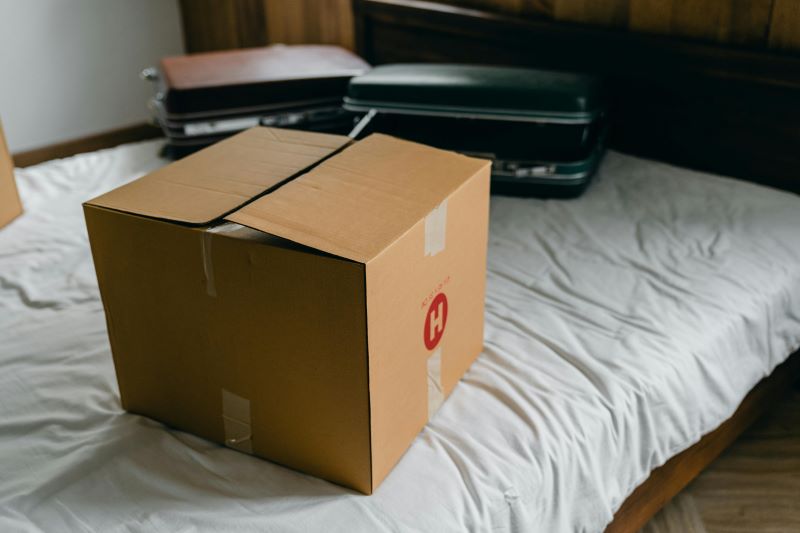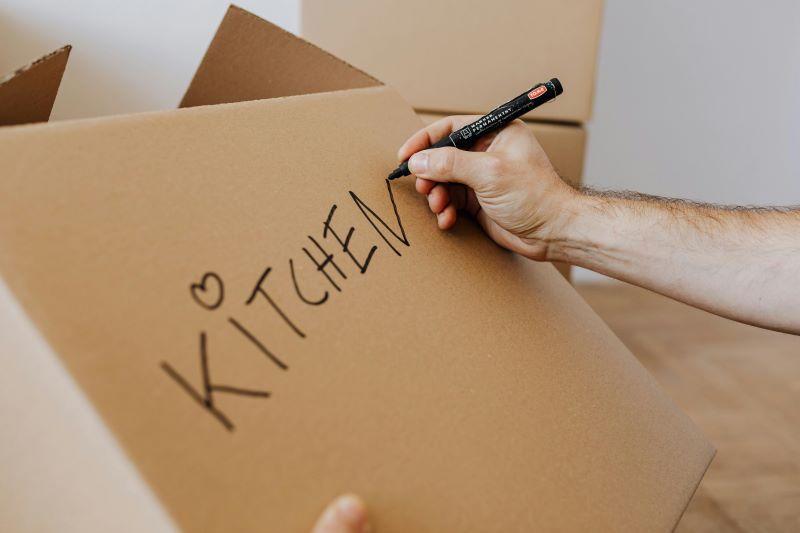Are you relocating by yourself or using professional movers? Either way, you’ll need to have your properties and other personal items ready for the move long before the deal day.
You might not know it yet, especially if it’s your first time moving, but relocation comes with a fair amount of stress. From gathering your supplies to actually placing things into a box and arranging them, it will be challenging.
Luckily, there is a good way to mitigate the hard labor that comes with it — by having a well-thought-out plan!
For those without such a plan, let’s help you create a complete packing checklist for moving that will be specific to any relocation plan.
The Prep Time (1 – 2 months before move day)
At this point, you probably have gotten a new space already, and fixing a date for your move is the next thing on your mind.
While it’s not a bad time to begin packing your properties, for the best and most seamless moving process, you first need to get some things in order.
Here are key steps to take before drawing a packing checklist for moving:
Step #1: Assess your inventory
- What’s in stock?
- How many properties do you actually have?
- Are there several fragile items… if yes, how many?
- Do you have tons of heavy things that could make moving difficult?
These are some questions you need to ask yourself properly at this point. The truth is not everyone is completely aware of what they’ve got in their home until it’s time to dig through the trash.
Step #2: Declutter
During this time, you really want to sort your items and properties into categories.
Figure out which items are good to keep, the ones that are in good condition but not useful to you, and the outrightly bad ones.
Categories every property based on these: keep, donate, sell, and discard. If you have to walk through each room in your home and write down or note the things, then do exactly that!
Step #3: Gather your supplies
Once you have your items listed in the “keep” category, you already know how many properties you’ll be packing for the move ahead.
Declutter first before getting the supplies ready, mainly so you don’t need to over or under-purchase packing items like boxes that would aid your move.
Here’s a list of the common supplies needed for every move:
- Cardboard boxes
- Newspaper/packing paper/tissue paper
- Bubble wrap
- Packing tape
- Plastic containers
- Blankets and towels
- Box cutter and bin liners
- Plastic and cotton bags
- Utility knife/scissors
- Marker pens or stickers
Note:
You could save money on buying packing supplies by asking someone you know who recently moved, using old delivery boxes you kept, or shopping at discount stores.
Packing Checklist for Moving Room-by-Room
You definitely want to start your “how to pack for moving” journey on a well-organized note.
Instead of packing at different times inside the same boxes or wrapping whatever fragile item your hands can lay on with bubble wrap, it’s best to go at a steady pace room-to-room.
Generally, here’s how to pack each room space in a home.
Living room
This part of the home usually holds some of the most expensive items in most households, and you would do well to pack carefully to avoid any damage.
- TVs:
You should wrap these with protective blankets and bubble wrap, and secure them with packing tape. Be sure to place the TV in its original box or in a new, well-fitted one.
- Sofas:
Start by removing the feet from each sofa and couch (if possible). Clean each one thoroughly and wrap it with a plastic wrap or blanket to protect it from dust and dirt while moving.
- Electronics:
Aside from your televisions, things like speakers, heaters, air conditioners, and smart home devices should also be packed carefully and wrapped—into original boxes or new, well-sized ones.
- Furnishings:
Cushions and throws can be stored safely in bedding bags or plastic storage containers. Other decor, such as wall art and picture frames, should be wrapped with chemical-free packing paper.
- House plants:
Get a nice box for small—to medium-sized house plants. Confirm with your moving company if they can help you move larger and much heavier pots of plants.
Kitchen (and Pantry)
The kitchen will prove to be a challenging place to pack! You will find oddly shaped objects and items that don’t just seem to pair well together for a move.
- Plates, bowls, mugs, glasses, and stemware:
Among the fragile items you’ll pack, mugs, glasses, and stemware will most likely take the top spot.
To pack plates, place packing paper between each one and stack them into a box. You will require sectioned boxes to pack mugs, glasses, and stemware.
- Appliances:
Just like your living room’s electronics, pack all kitchen appliances (fridge, freezer, toasters, ovens) into their original boxes.
Unplug each one’s wiring and disconnect any components that could hinder movement, especially dryers and dishwashers.
- Utensils:
Pack these in categories or based on their similar shapes. Use a band to hold spoons and forks together before placing them all in a container of the right size.
- Cleaning products:
Ensure every cleaning agent is sealed properly to prevent spills during a move. Certain chemical agents used in cleaning products might be prohibited to move with, so your movers would opt out of taking them along.
Bedrooms
This part of your home should be easy to pack since you already have the place arranged most of the time.
- Beds:
If you can, dismantle bed frames before your movers get into the house to save costs. Ensure to keep every screw and loose parts secured. Wrap your mattress with plastic wrap to protect it.
- Jewelry:
Valuable or not, you want to pack the jewelry in a safe place—perhaps in a secure container. Thread necklaces and long jewelry through paper straws to prevent them from tangling.
- Clothing and linens:
Your clothes are best packed, folded, and carefully arranged into suitcases or traveling bags. Clothes on hangers can be left on them but covered with a recycling bag. Linens and beddings should be in plastic zip-up bags.
- Bathroom items:
These items are fixtures and fittings, meaning most aren’t coming along with you. So, just pack your toothbrushes, toothpaste, face wash, bathing towels, and other accessories into a small plastic container or bag.
Garage/basement/attic
Tools, machinery, and items that are not often always useful daily usually find themselves stored in these places. Learning how to pack when moving is important for this part of the home.
- Tools:
Garden tools, screwdrivers, and any gas-powered equipment should be cleaned, well-kept, and packed without the presence of kids.
Garden tools may not need boxes like shovels, but other equipment can be kept in original packaging.
- Seasonal items:
Christmas lights and winter jackets should be packed into a box — wrap the snow clothing. Snowshoes and other not-so-used items can be packed together.
Moving Day Tips
As you continue to plan how to pack for a move and create a packing checklist for moving, there are a few tips you might want to have in mind.
- Before your move, have a budget range in mind. This will cover every supply you might purchase and payment for professional movers.
- Have an essentials box or bag packed the night before move day. It should include everything you need while moving or upon arrival.
- Ensure to pack one room at a time. Start with the less used or least stressful room.
- When packing fragile items, label them with a marker or use “This Side Up” or “Fragile” stickers on the box.
- Never place heavier items on lighter ones or easily breakable objects.
- Always try to pack similar items together; it keeps things organized.
- Label every box by the content and room. You could create a color code system for this.
Key Takeaway — Easy to Remember Packing Checklist for Moving
While relocating brings its own unique excitement, the stress involved can often overshadow the main joy at some point.
However, to maintain a consistent euphoric state, following a proper packing checklist for moving guidelines is best.
Just remember:
- Declutter,
- Take inventory of what you have,
- Gather needed supplies,
- Pack room-to-room.
Good luck.




